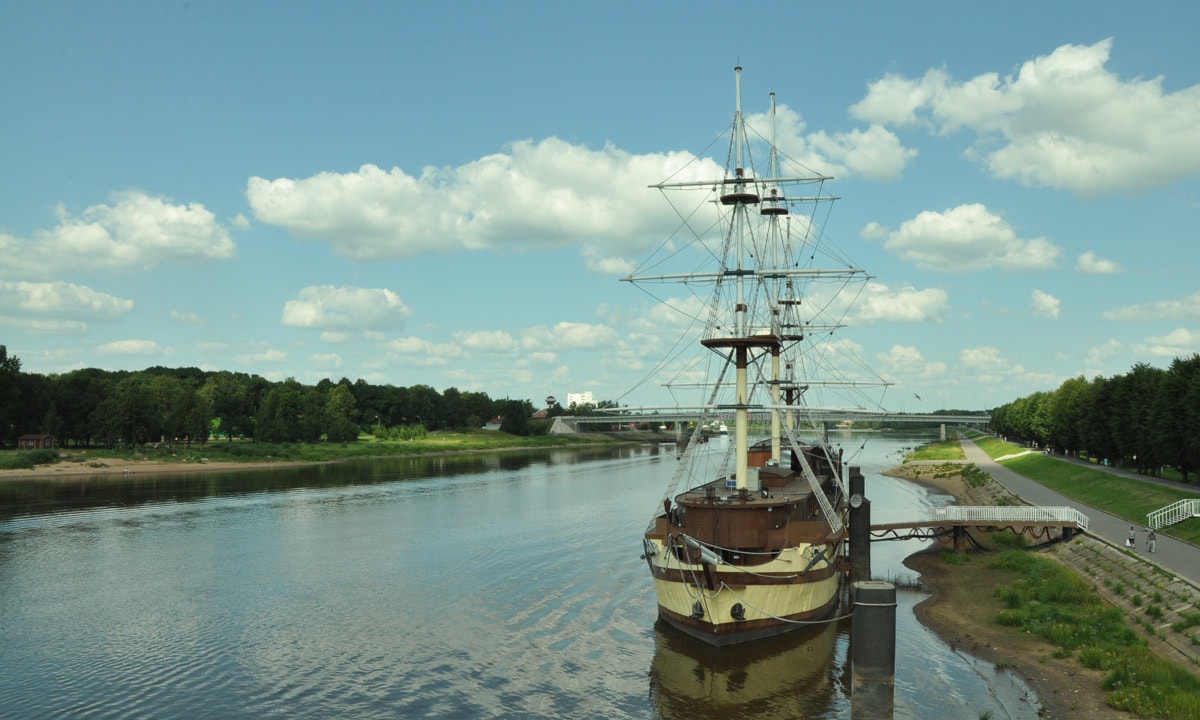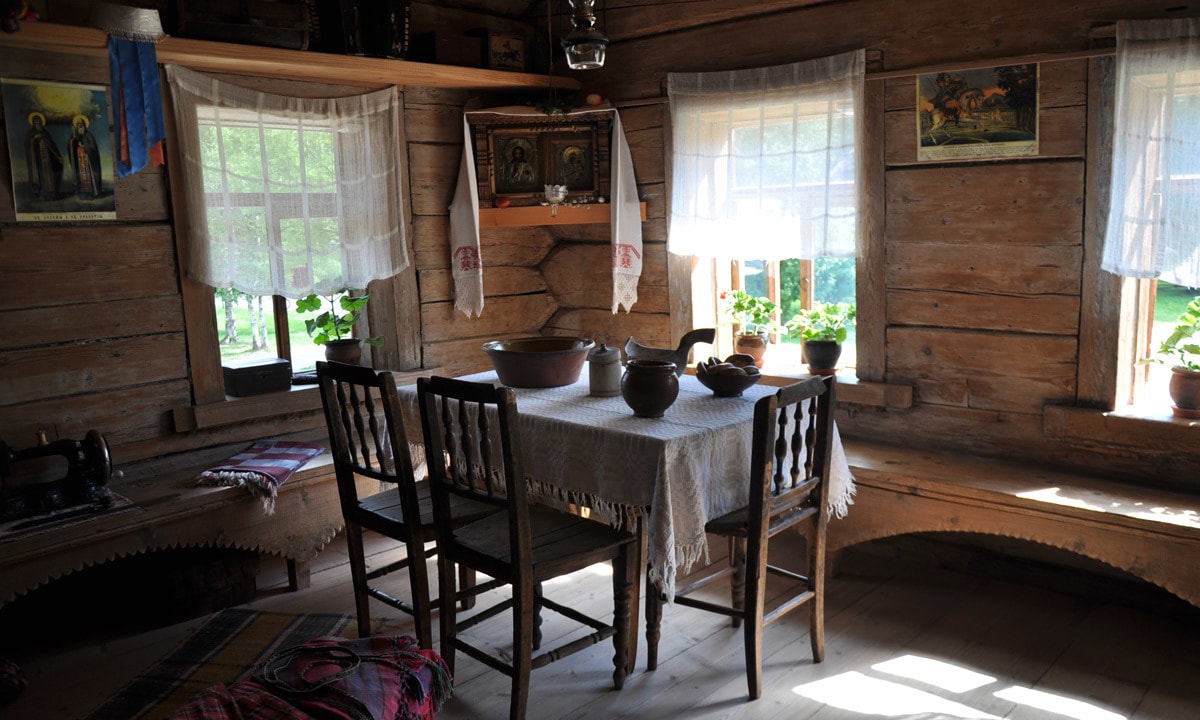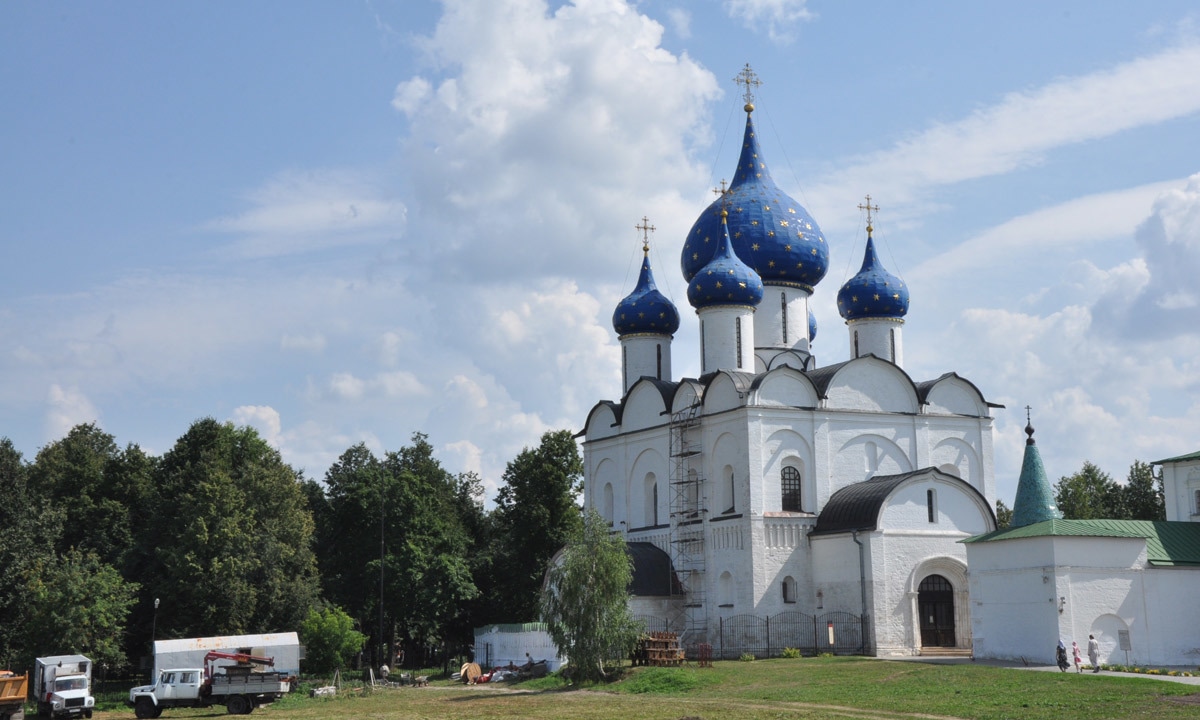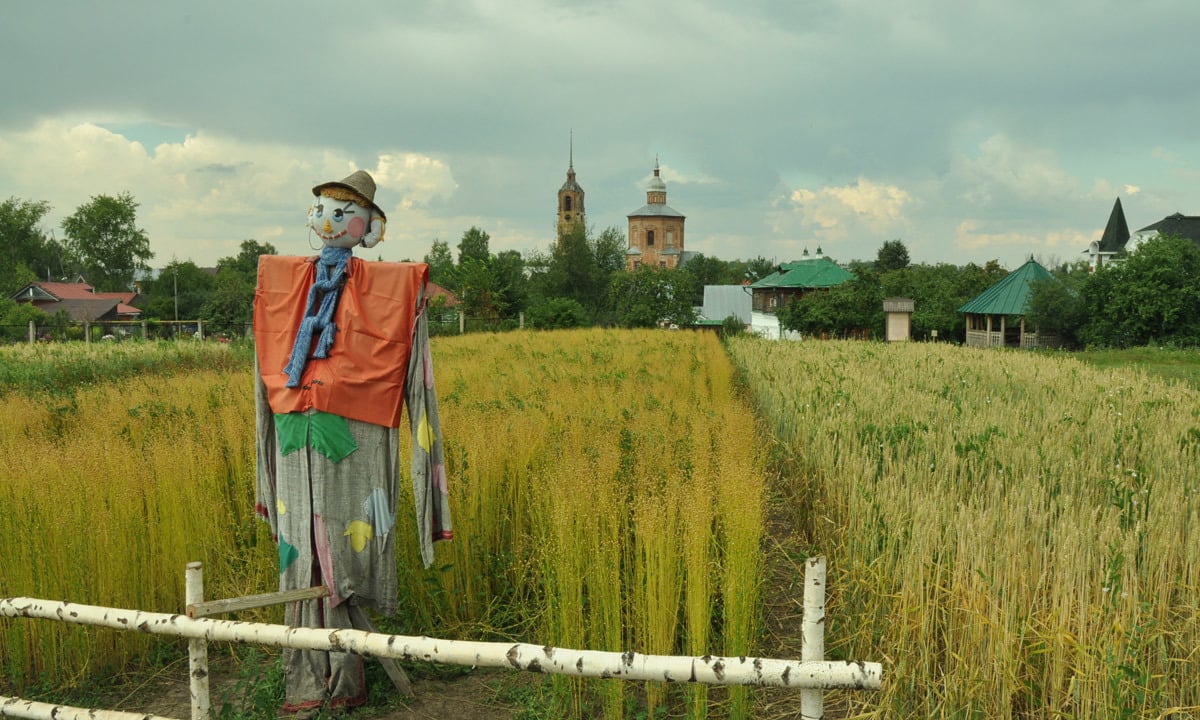Unravelling Russia: Exploring Novgorod and Suzdal
“Why do you want to go to Russia? What is the urgency?” The visa officer waved the urgent visa application in my face.
It was a moment of sheer wanderlust when we decided to travel to Russia. We had not planned much which left us no time to wait for the regular visa process. Hence we opted for urgent visa and paid premium for tickets to Moscow. It all worked out in the end and we got our stamped passports just in time for the flight.
Pakistan never had an easy relationship with Russia ever since the partition. However, that never stopped artists and writers of both countries from inspiring each other. I went to Oxford Publications outlet in Karachi to get a copy of Dr. Ludmila Vasilieva’s "Parvarish-e-loh qalam", a stunning book on Faiz’s life and letters. I hoped to get it signed from her at the University of Moscow but to my utter disappointment, she had been travelling, so I missed my chance.
Nevertheless, my days exceeded expectation in every possible way. We were well aware of what Moscow and St. Petersburg had to offer to an avid traveler but it was Velikiy Novgorod and Suzdal, two sleepy towns of historic importance which made the trip memorable.
 |
| Veliky Novgorod-Kremlin entrance |
 |
| Veliky Novgorod-A view of Museum of Wooden Architecture |
 |
| Suzdal-Various Churches near St.Euthymius Monastery |
Veliky Novgorod
Veliky Novgorod, a UNESCO world heritage site, is considered to be the birthplace of Russia. The city was founded during the 10th century on the banks of Volkhov River which made it a key trading post and later fueled its growth as a political and cultural hub.
We arrived in Novgorod via train in the afternoon and instantly embarked on our journey towards Kremlin. We took a local bus from the railway station and with the help of Google translate told the bus driver to make a stop at Kremlin. The Russians are said to have expressionless faces, but that was not the case with the driver who was quite animated and helped us with the directions. Much to our surprise, he did not even charge us the fare.
 |
| Novgorodians flock in near the bank of Volkhov River on a holiday. |
 |
| A view of Volkhov River. |
 |
| St. Sophia Cathedral - Considered to be the oldest Church in Russia. |
The Kremlin has remained the heart of the city and is its biggest tourist attraction. The current fortification was built in the 15th century along with its impressive towers which provide panoramic views of Kremlin and the Volkhov River.
The entry to the Kremlin was free and we kept walking till we reached St. Sophia Cathedral which is considered to be the oldest church in Russia. It was a miracle that the Church survived Nazi occupation despite heavy damage to its domes. Unfortunately ,it was closed so we could not go inside to see its famous frescos.
 |
| A view from the the Kremlin fortification wall. |
 |
| A view inside Kremlin. |
 |
| Kremlin fortification walls. |
We continued walking to the far end where the famous bell tower of St. Sophia stood. Not very long ago, its chimes could have been heard in the far corners of the city. It has been turned into a museum of ancient bells now. There was a staircase behind the tower which led us to the top of the fortification. The breathtaking view from up there overlooked the Volkhov River, where Novgorodians flock in during holidays.
 |
| Exhibits of bells inside Bell Tower of St. Sophia. |
 |
| A view from Kremlin fortification wall. |
 |
| The view from the fortification wall. |
We walked through the guard towers across the wall which had a few exhibits on display. We stepped down from the same staircase and walked towards the monument of the Millennium of Russia. The grand monument was built in 1862 by Emperor Alexander II to commemorate the invitation of Novgorodians to the Scandinavian Prince, Rurik who later founded his dynasty and united significant part of Russia for the first time. It was considered to be the beginning of the Russian state.
Novgorodians are proud of their rich political legacy. Novgorod is the first city where a republic was established in Russia. The 12th century Novgorodians chose their rulers according to their will via “veche” which was a representative council of aristocratic Novgorodians families. The Novgorod Republic was annexed to Moscow in the 15th Century.
Opposite the grand monument is the Novgorod State Museum which displays artifacts from medieval Novgorod and has one of the largest collections of icons in Russia.
 |
| St. Sophia Bell Tower |
 |
| The grand monument of the Millennium |
Yuriev Monastery
 |
| Yuriev Monastery |
 |
| A view at Museum of Wooden Architecture |
 |
| A view at Museum of Wooden Architecture |
From Novgorod, a half day excursion could be made to the Yuriev Monastery and the Museum of Wooden Architecture.
The Yuriev Monastery is considered to be the oldest monastery in Russia and was initially built by Yaroslav the Wise near the Volkhov River. The stone building was later constructed by Prince Vsevolod Mstislavich of Novgorod. Its famous onion domes set the precedence for centuries to come.
A little further down was the Museum of Wooden Architecture where old wooden structures from nearby villages were displayed in a picturesque setting. It gave us a rare view into the lives of Old Russian villages with traditional houses, chapels and churches making an exquisite country setting.
 |
| Inside a typical Russian home in Museum of Wooden Architecture. |
 |
| A typical rural house in Museum of Wooden Architecture. |
 |
| A typical rural house in Museum of Wooden Architecture. |
Suzdal
 |
| A picturesque setting of ancient churches and monasteries. |
 |
| Statue of Lenin. |
 |
| A picturesque setting of wooden houses. |
Suzdal is a picture perfect getaway for people who seek a quaint experience in modern day Russia. The people of Suzdal failed to convince authorities to include the city on the grand Trans-siberian Railroad but this later proved to be a blessing in disguise. It ensured that Suzdal was virtually untouched by the frenzy of consumer growth which changed the landscape of later years Russia.
The city has a rich history and Suzdal had remained capital of many principalities during more than thousand years of its existence. It became an important religious center housing many churches and monasteries during medieval times.
From Veliky Novgorod we took the train to Moscow and after a considerable wait found a train to Vladimir, the closest city to Suzdal. The day train did not have the luxurious seating or hospitable dining car of overnight trains.
 |
| Slow moving waters of Kamenka river. |
 |
| Exhibits inside Kremlin Museum. |
 |
| A view from Kamenka river boat ride. |
After getting off at Vladimir, we hopped on a local bus that took us through a short and scenic route to Suzdal. The bus went through many small stops and people came and left. I sat next to an old lady who was carrying her grocery home. She asked me where I was from, or so I guessed. I told her that I was from Pakistan. She smiled back and started speaking in Russian. I kept nodding my head and told her that Russia was beautiful.
We reached the Suzdal bus station which was a bit far from the city center but the bus continued its journey into Suzdal so we stayed back. The bus finally stopped in the middle of the city center from where we walked towards our rented apartment. Our host was a local resident who has turned a part of his house into a bed and breakfast inn.
 |
| Walking past the city center. |
 |
| Souvenir flea market near city center. |
 |
| A beautiful bridge over Kamenka river. |
It was raining when we stepped out for a walk. We strolled through the city center which was the heart of all tourist activities. There was an instant flea market of souvenirs. Most of the people in present day Suzdal are in one way or another connected to the burgeoning tourism industry. We walked past monasteries with typical onion domes and wooden houses painted in vibrant colors. The idyllic setting was in stark contrast to urban Russia where soulless concrete structures have sprung with growth in the consumerist economy.
We continued walking towards the Kamenka River which moves slowly through the outskirts of Suzdal. We could see the Museum of Wooden Architecture and Peasant Life on the other side of the river which was similar to one in Novgorod.
 |
| An overcast day in Museum of Wooden Architecture. |
 |
| Onion domes of Cathedral of Nativity. |
 |
| Boar ride over Kamenka river. |
The most famous building inside the museum was that of the Wooden Church of St. Nicholas which was built in 1766 and later moved to Suzdal to be a part of the museum display. There were many stalls offering local cuisine. Suzdal is one of the very few places where you can still find people selling medovukha, a once famous mildly alcoholic honey drink.
We then got on a boat that was leaving for a short sightseeing tour of the river. We could see colorful huts and the verdant landscape all around. We also saw a few artists capturing these quaint moments on their canvases.
 |
| A view from Museum of Wooden Architecture. |
 |
| A typical wooden bridge over Kamenka river. |
 |
| A view from Kamenka river. |
The next day we visited Suzdal’s Kremlin which was the seat of power for many centuries. The structure dated back to the 10th century and was home to the famous Cathedral of the Nativity. The Kremlin Museum displayed many exhibits and was worth a visit.
 |
| Kremlin Museum entrance. |
 |
| Ancient wooden structure near Suzdal Kremlin. |
 |
| Inside Cathedral of Nativity. |
On our way back we stopped at the Yevfimievsky Monastery. Apart from the Cathedral, it was home to various museums and Belfry. It had thick brick walls with guard towers which helped protect far corner of Suzdal. From the Monastery, a picturesque path led us to Convent of Intercession which was founded in 1364 as a female monastery. The most famous landmark inside was the cathedral of the Intercession. We were running out of time hence were unable to see it from the inside and walked back to our apartment.
 |
| Inside Cathedral of Nativity. |
 |
| A local fishermen at Kamenka river. |
 |
| Kamenka River near St.Euthymius Monastery. |
We took the journey back to Moscow from the same bus stop. As I saw people coming and leaving, I remembered the lines From Reading Lolita in Tehran, that you get a strange feeling when you are about to leave a place. “You‘ll not only miss the people you love but you‘ll miss the person you are now at this time and this place, because you‘ll never be this way ever again.”


